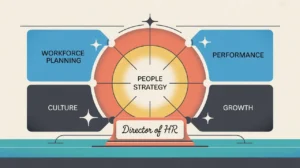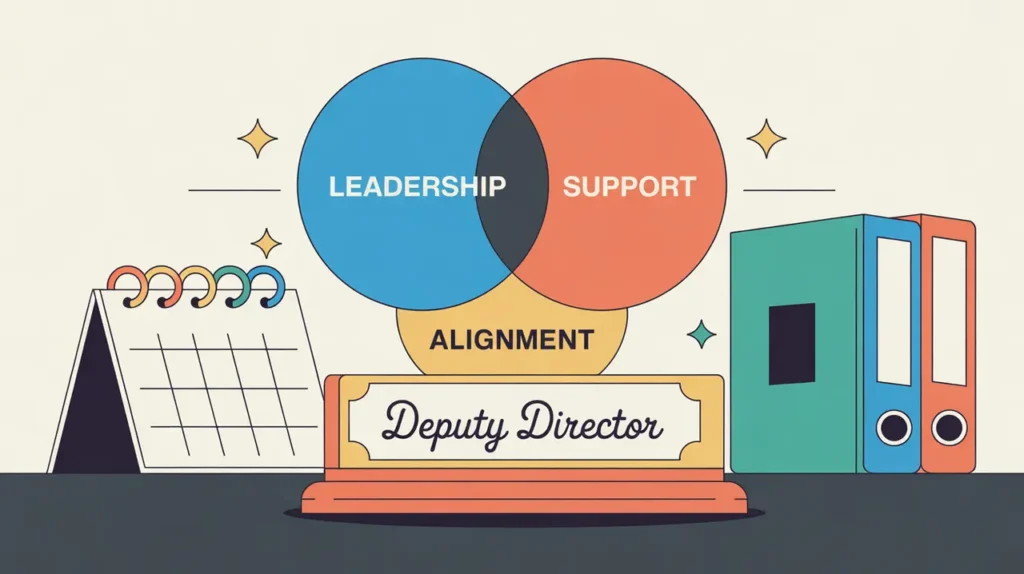What Does the Chief Strategy Officer Role Involve?
A chief strategy officer (CSO) is responsible for defining, guiding, and integrating the organization’s overall strategic direction to achieve its mission and long-term goals. This involves leading strategic planning processes, analyzing trends and opportunities, aligning internal capabilities with external contexts, and ensuring that strategic priorities are translated into actionable initiatives. The CSO works closely with the CEO, board, and executive team to shape organizational vision, identify growth opportunities, manage strategic risks, and evaluate performance against key objectives. In both nonprofits and social enterprises, the CSO plays a central role in bridging vision and execution, ensuring that strategy is dynamic, data-informed, and aligned with mission impact.
At What Level does this Role Operate?
Executive Level: This role operates at the highest level of organizational leadership, typically reporting to the CEO and serving as part of the executive team. The CSO leads strategic planning across departments and collaborates with program, policy, operations, finance, and external relations teams to ensure coherence and strategic alignment.
Relative Employability: Executive strategy leadership roles are increasingly in demand across nonprofits, social enterprises, philanthropic institutions, and international NGOs. Organizations seek leaders who can navigate complexity, identify opportunities, and create strategies that are both visionary and executable.
Relative Pay Scale: Within nonprofits and social enterprises, chief strategy officer roles sit in the highest executive pay bands, reflecting their central role in shaping organizational direction and performance.
What are the Key Responsibilities and Activities?
- Lead the development and implementation of the organization’s strategic plan and priorities
- Conduct landscape analyses to identify emerging trends, opportunities, and risks
- Translate strategic vision into operational plans and measurable goals across departments
- Collaborate with leadership teams to align resources, programs, and initiatives with strategy
- Monitor progress on strategic objectives and adjust plans in response to changing contexts
- Advise the CEO and board on strategic risks, opportunities, and organizational positioning
- Facilitate cross-departmental coordination to ensure strategic coherence and integration
- Represent the organization externally on matters related to strategy and growth
What Core Competencies and Qualifications are Needed?
Required Qualifications and Experience
The following reflect common qualifications and experience expected for this role, while recognizing that pathways may vary by context, organization, and region.
- Relevant academic background in business administration, public policy, economics, or a related field, or equivalent professional experience
- Extensive leadership experience in strategy development, planning, or organizational management, ideally at a senior or executive level
- Deep understanding of strategic frameworks, analytical tools, and planning methodologies
- Proven ability to collaborate across functions and lead complex strategic processes
- Experience advising executives and boards on organizational direction and growth
Key Competencies
- Strategic vision and analytical expertise
- Strong facilitation, planning, and communication skills
- Systems thinking and ability to integrate diverse perspectives
- Decision-making under uncertainty and adaptive leadership
- Cross-functional collaboration and influence
- Commitment to mission and long-term impact
How are AI and Automation Shaping this Role?
An AI-native chief strategy officer will look to AI and automation to enhance foresight, scenario planning, and strategic decision making. They can use AI tools to analyze complex datasets, identify patterns and trends, and model future scenarios that inform strategy. Automation can support strategic tracking, reporting, and knowledge management, allowing the CSO to focus on insight generation and adaptive leadership. By integrating AI strategically, CSOs can build more agile, informed, and forward-looking strategies that position their organizations for lasting impact.
What Career Pathways and Transferable Skills are Associated with this Role?
Chief strategy officer roles are senior leadership positions that often serve as direct pathways to CEO, COO, or board advisory roles. The combination of strategic foresight, analytical leadership, and cross-functional influence developed in this role is highly transferable across nonprofits, social enterprises, philanthropic organizations, think tanks, corporations, and public institutions. CSOs are well positioned to shape organizational direction and drive systemic change across diverse contexts.







